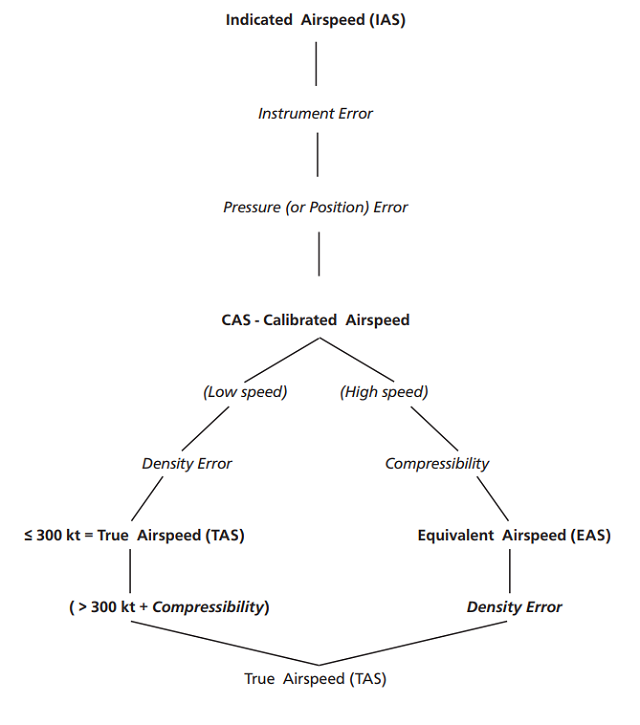The Navigation Computer: Airspeed Indicator Errors - Application of Corrections
What you see on the instrument is called Indicated Airspeed (IAS). Instrument Error and Pressure (or Position) Error are then applied to give Calibrated Airspeed (CAS). This is the more modern and generally accepted term, but many documents use the older term Rectified Airspeed (RAS). The corrections are applied by use of a correction card usually stuck beside the instrument.
In practice, we do not have separate cards for the Instrument Error and the Pressure Error. It is simpler to combine both corrections onto a single card. IAS is therefore corrected for both Instrument and Pressure Error by the correction card, to give CAS.
Strictly speaking, CAS is then corrected for compressibility error to give Equivalent Airspeed (EAS), to allow for the fact that the density of air is rarely precisely 1225 grams per cubic metre, which is the value for which the ASI is calibrated. (The ISA atmosphere at Mean Sea Level).
In practice, as an airline pilot, you are unlikely to deal with EAS and it is rarely encountered outside scientific and test flying. The ASI is already calibrated to allow for compressibility at ISA at MSL and, under those conditions, no compressibility correction is necessary. Compressibility correction is small at True Airspeeds (TAS) lower than 300 knots and no correction is considered necessary.
You will therefore always calculate the Density Error correction first to give True Airspeed (TAS). If the TAS you find is 300 knots or less, no further correction is necessary. If the TAS is greater than 300 knots, Compressibility Error correction must be applied.

Next: Calculation of TAS from CAS - Correction of Density Error
© 2022 terms of use privacy policy